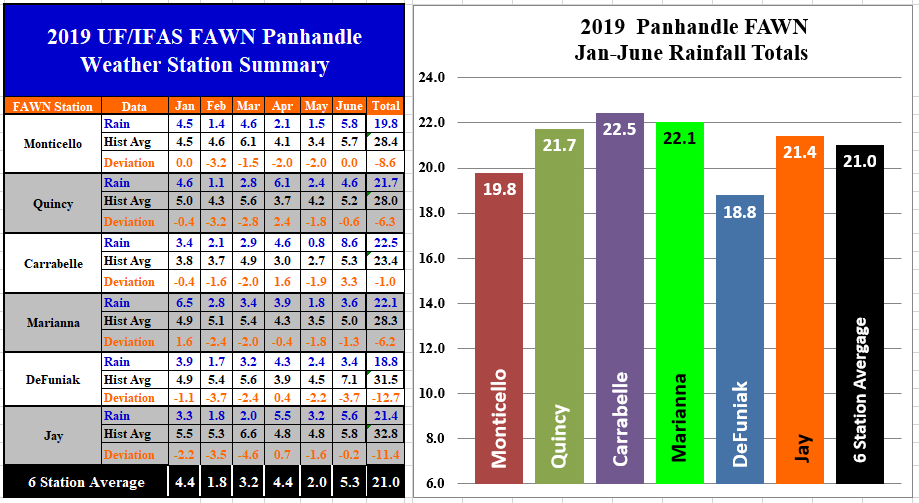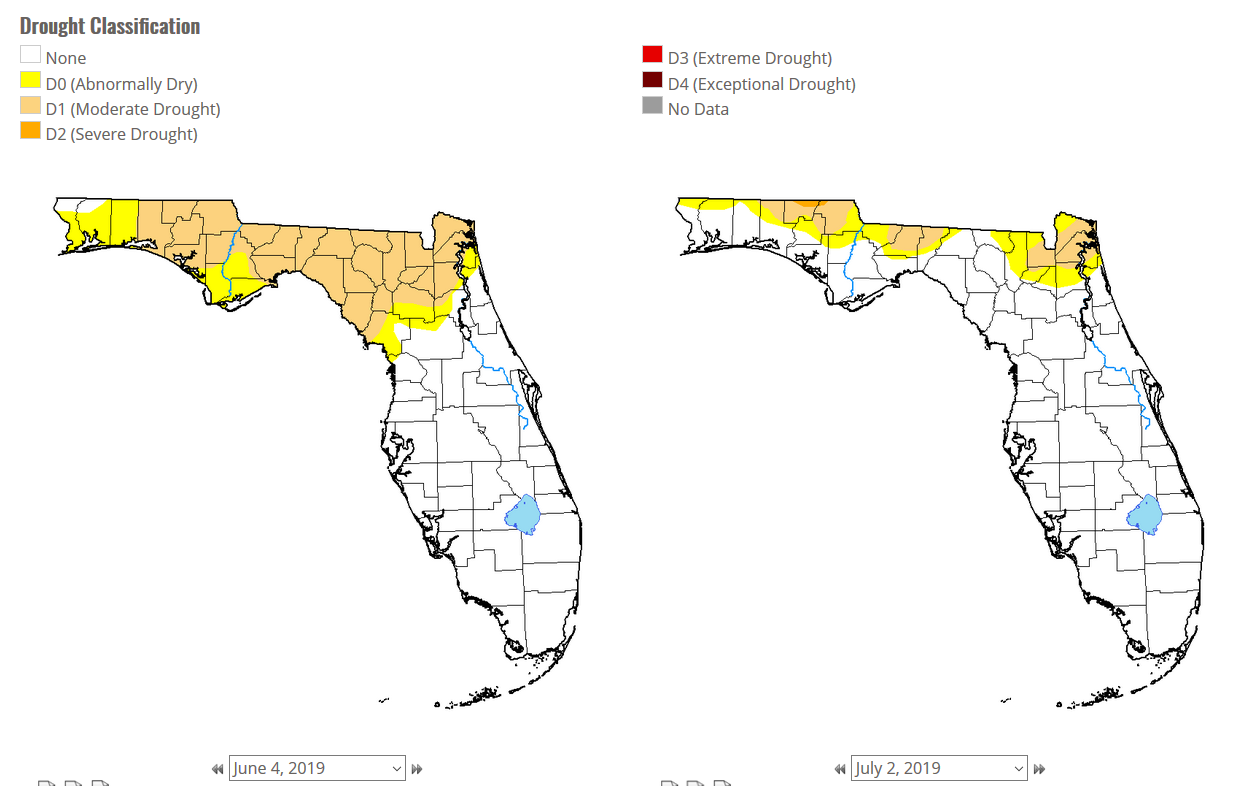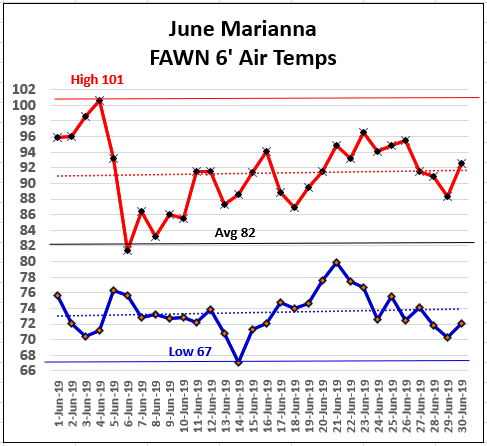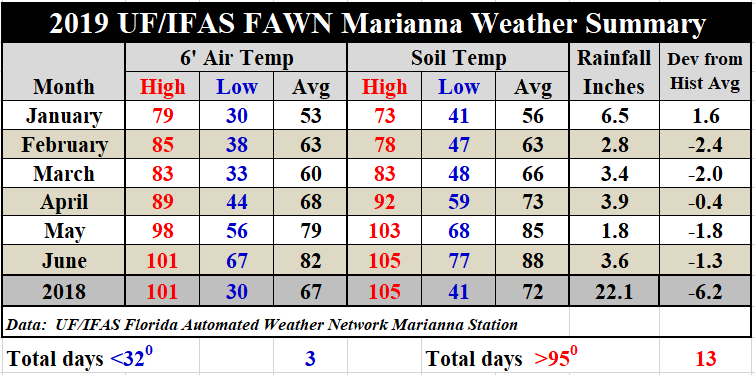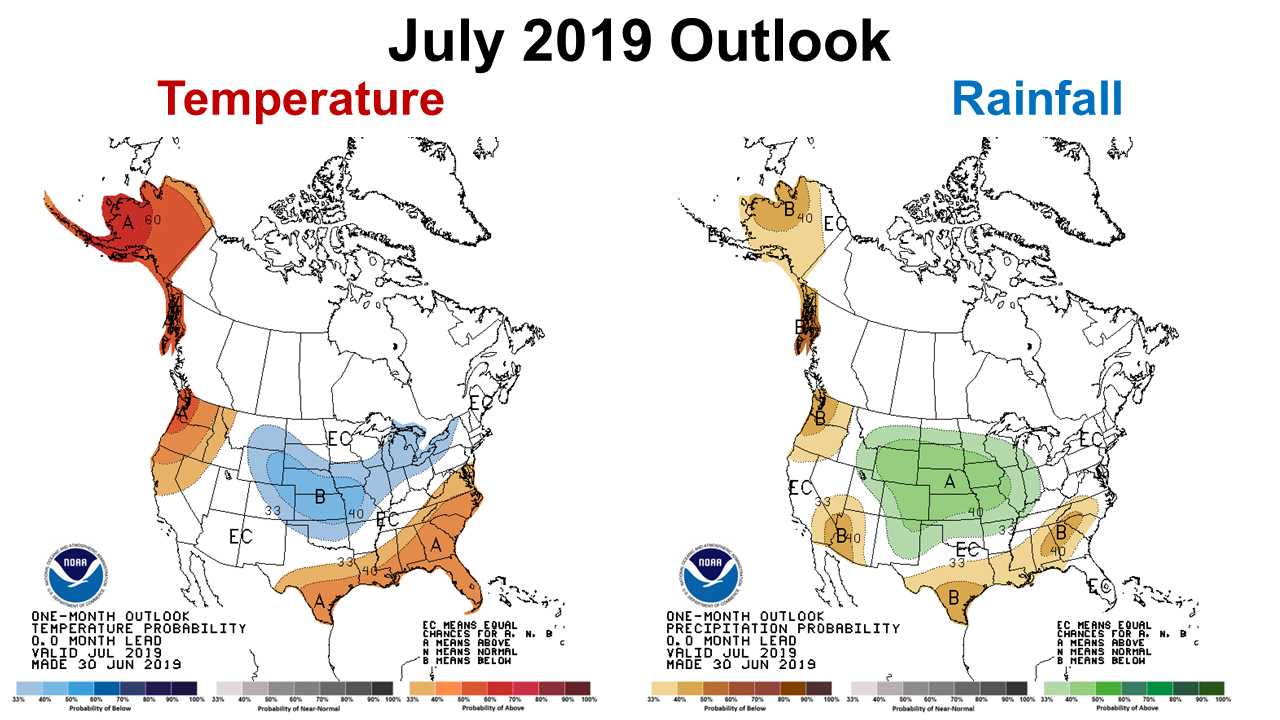Rainfall
June was another dry month for much of the farming regions of the Florida Panhandle, but even so was a significant improvement over the previous months. Rainfall amounts varied considerably by location with much higher totals along the gulf coast with over 10″ (blue) in Gulf and Wakulla Counties, while along the northern border much lower totals were recorded 2-6″ (yellow, and tan). The majority of the Panhandle ranged from 6-10″ (light and dark green).
The Florida Automated Weather Network (FAWN) stations in the Panhandle also documented the variation in rainfall across the region in June. The wettest location was the station in Carrabelle with 8.6″ (3.3″ above normal), while the driest location was DeFuniak with only 3.4″ (3.7″ below normal). The average of all six stations was 5.3″, which was 0.4″ below normal.
Through the first half of 2019, the Carrabelle station had the highest total of 22.5″, but was still 1″ below average. The driest location was in DeFuniak with only 18.8″, which was 12.7″ below historic average for that location. The average for all six stations was 21″, which was 7.7″ below normal.
While the increase in rainfall was positive, much of the Panhandle remained in drought at the end of June. In fact parts of Holmes and Jackson County were downgraded along with Alabama into the D2 Severe Drought category. So there was relief for much of North Florida, but there were still three areas where the drought continues along the northern border of the state.
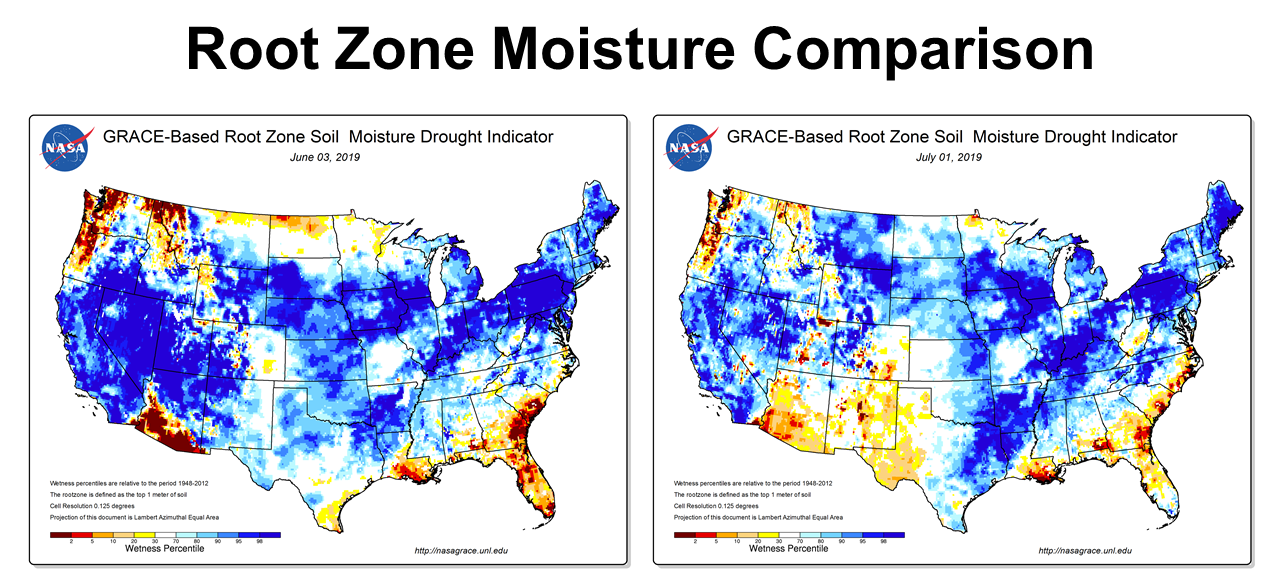 The NASA root zone moisture maps show how most of Florida improved from the end of May to the end of June, except for the counties near Dothan, Alabama and Jacksonville, Florida.
The NASA root zone moisture maps show how most of Florida improved from the end of May to the end of June, except for the counties near Dothan, Alabama and Jacksonville, Florida.
–
Temperatures
The hot summer got even hotter in June. The hottest day of the year thus far was 101° on June 4th. That day the soil heated up to 105°, so it was no wonder crops were stressed and wilting. The low of 67° came on June 14th.
As compared to May, the average air temperature was 82°, which was 3° warmer than May (79°). Soil temperatures heated up as well with an average of 88° in June, as compared to 85° in May. Through the first 6 months, there have already been 13 days with highs above 95°, as compared to only one day in 2018.
–
Outlook for July
Despite the rains that came through the Panhandle in early July before forming Tropical Storm Barry, the Climate Prediction Center (CPC) is forecasting more hot and dry conditions in July for the Panhandle. But, the CPC’s outlooks have been wrong much more than right this year, so let’s hope the drought continues to diminish in the Southeast.
–
El Niño Watch
The CPC is expecting the current El Niño to continue through the Summer, but is uncertain if it will carry into the fall.
Equatorial sea surface temperatures are above average across most of the Pacific Ocean. The pattern of anomalous convection and winds are generally consistent with El Niño. El Niño is predicted to persist through the Northern Hemisphere summer 2019 (66% chance), with lower odds of continuing through the fall and winter (50-55% chance).
So what do these forecasts mean for farmers in the Panhandle? For whatever reason, the 2019 El Niño has not brought rains to the Southeast, so the CPC’s forecast reflects that same trend. While much of the nations agricultural land is too wet, this region of the country has been mostly hot and dry. There is some good news, according to NOAA, hurricane development in the Atlantic is suppressed during El Niño events. The Gulf is very warm, so we sure don’t want storms wandering into those warm waters and ramping up this season. So if El Niño can prevent them from ever forming in the Atlantic, that would be good.
Hot and dry conditions favor white mold in peanuts, so that could be a more serious issue this year. Hot and dry conditions also reduce cotton reproduction, so this could results in even lower yields if this trend continues. There may be some good hay weather in July, but if it gets dry again, there could be a real concern about making enough hay later this year? Since the first four months of the growing season were so dry, the first cutting was limited. Hopefully the recent rains will provide excellent growth for a good second hay cutting. Just be aware that the mild winter provided an early start for armyworms, so don’t let the worms eat up what could be your best hay cutting this year.
- November 2025 Weather Summary & Winter Outlook - December 5, 2025
- Friday Feature: The History of Beekeeping - December 5, 2025
- Friday Feature:Malone Pecan Festival Tractorcade - November 21, 2025


